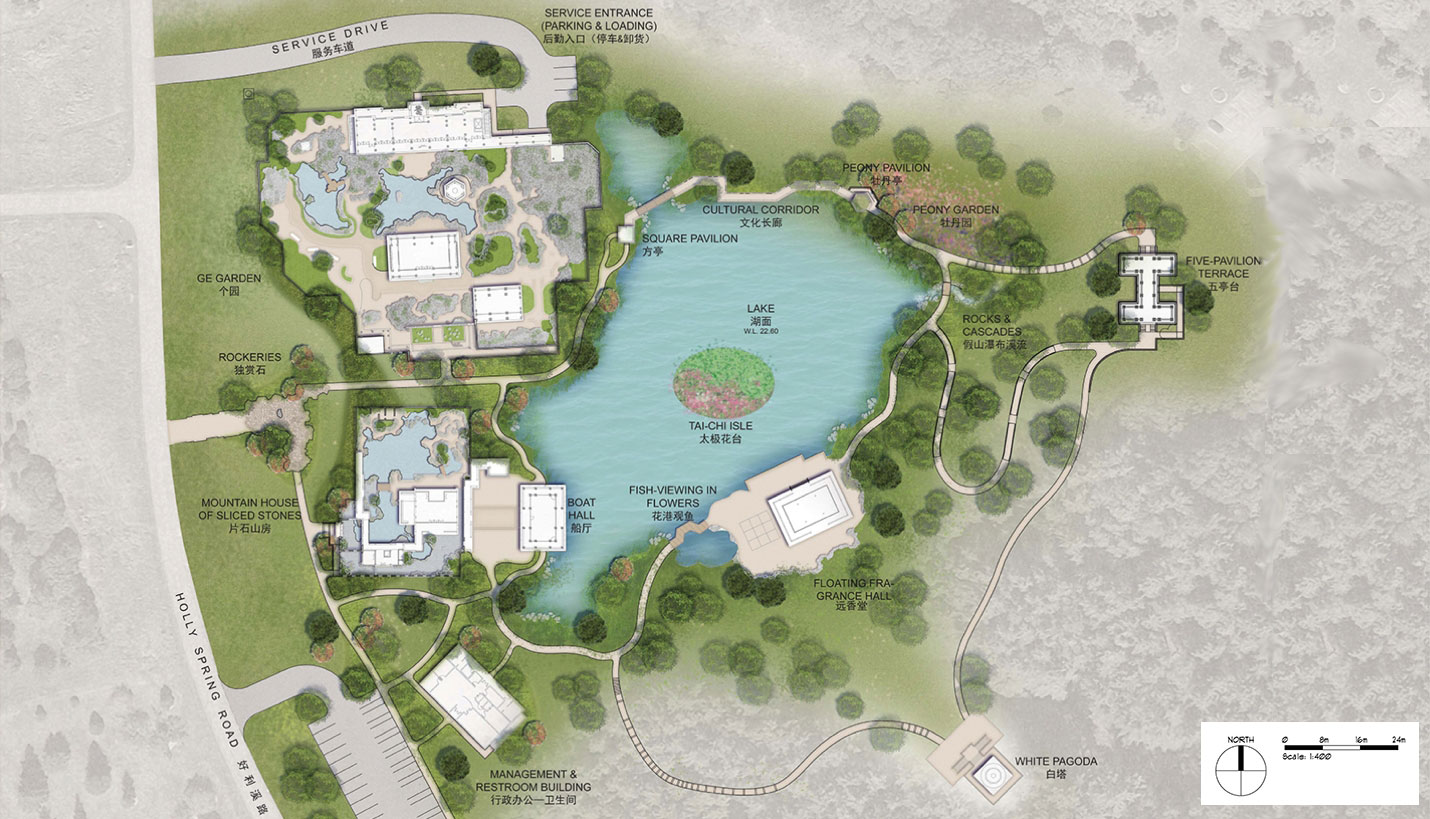

National China Garden
The National China Garden Foundation has selected an architecture and engineering team led by Page Southerland Page to develop a site plan, assume responsibility for civil engineering, infrastructure design and more for a national China Garden at the U.S. Arboretum. Page Southerland Page and its colleagues will support a Joint Design Team comprising Chinese and American representatives already working collaboratively to bring to fruition the vision of a classical Chinese garden and center for cultural study.
The garden is slated for construction at the U.S. National Arboretum in Washington, D.C. It is intended as a permanent testament in the nation’s capital to the strength and importance of U.S./China relations. Project funding is to be raised through a $60 million capital campaign focused on private resources needed not only for design and construction, but also long-term maintenance and operation.
Page Southerland Page leads a comprehensive team comprised of engineers, landscape architects, and mechanical contractors working together to realize a plan originally created by a Chinese design team at the conceptual stage of the project. Page team members include:
- Rhodeside & Harwell with Peter Liu – Landscape Architecture
- Dewberry – Civil/Structural/Mechanical/Electrical/Plumbing Engineering
- Schnabel Engineering – Geotechnical Engineering
- Rolf Jensen & Associates – Code and Security Consulting
- Wells & Associates – Traffic and Transportation Engineering
- Harmony Ponds – Koi Pond and Water Feature Design
- Belstar, Inc. – Construction Cost/Project Management
- C.M. Kling + Associates – Lighting Design
- Lynch & Associates – Irrigation Planning and Consulting
- URS Burlington – Archaeological and Historic Documentation and Preservation
“Our selection committee was especially impressed that Page Southerland Page assembled such a diverse pool of expertise for this important project,” said Bob Stallman, chairman of the National China Garden Foundation board of Directors. “We have utmost confidence in their ability to complement the Joint Design Team and cooperatively construct a classical Chinese Garden,” Stallman concluded
Collaboration, continuity and compatibility are hallmarks of the design concept for the National China Garden. From the outset, a collaborative effort between the Chinese and American governments helped bring the original vision to life. That vision arose from a 2004 agreement between the China’s Ministry of Forestry and the U.S. Department of Agriculture to build a Chinese Garden in Washington, D.C.
A formal agreement to construct the garden at the Arboretum was signed by both governments and extended with a Memorandum of Understanding signed in 2011 by Secretary of Agriculture Tom Vilsack and China’s Ambassador to the United States Zhang Yesui. The MOU calls for a 12-acre facility on an undeveloped parcel at the Arboretum donated by the US Congress for the project and managed by the USDA Agricultural Research Service.
While there are other examples of classical Chinese gardens in the United States (California; Missouri; New York) the National China Garden at the Arboretum is expected to be the finest demonstration of a harmonious balance of man-made structures, plants, water and rockeries. More than just a beautiful garden for the public to visit and enjoy, the project is envisioned to be a venue for visitors from around the world to learn, enjoy and gain an appreciation for the profound influence of China’s history of horticulture and garden design.
“Page Southerland Page is delighted to have the opportunity to contribute to the cultural landscape of our nation’s capital,” said Thomas McCarthy, AIA, LEED AP and Principal with Page Southerland Page. “The National China Garden will offer an exceptional location for experiencing the sensual delights of a classical Chinese Scholar’s Garden as the backdrop to exhibits, events and classes. Designed to be a beautiful destination during every season, the Garden will be particularly poignant when hosting programs and events to celebrate our evolving relationship with China,” Thomas concluded.
Once completed, the U.S. National Arboretum will own the China Garden. In addition to the garden itself, the venue will feature some 22 structures, art and furnishings provided by the People’s Republic of China. It will serve as the location for meetings, conferences, special events in addition to public tours and year-round cultural and educational activities.
The national China Garden at the U.S. Arboretum is expected to become an important tourist destination and cultural center in the nation’s capital.
10/28/2013
People
Related Posts
- Enhancing Page's Strategic and Analytic Teams
- Integrating Resilience Into University Campus Planning
- Promoting the Living Community Challenge
- Building Equity in Communities
- Generating Outcomes: A Design Solution Mentality
- Overview: Buffalo Bayou Park Updates
- Learning By Design: Planning For A New Campus








